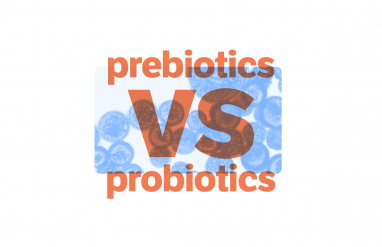Salt-N-Pepa would approve of this list. But even if their song is stuck in your head (you know you’re singing “Let’s talk about sex!” now) actually talking about sex is anything but easy. It’s overwhelming to have “the talk” with your kids, which is why experts suggest having an ongoing conversation on the topics of sex, consent, and reproduction as they grow instead of having it all at once.
The good news is that you can say goodbye to the dreaded “birds and bees” conversation. The bad news is that this means you need an age-appropriate way to to talk about sex with your kids from day one.
Fortunately, we have you covered.
Words matter
You should be talking about body parts pretty much from the word go. You want to avoid cutesy names (like cookie, muffin, and Willie) when teaching your children about their bodies. Just like an elbow is an elbow, a vulva is a vulva, and a penis is a penis. The more comfortable you are talking about their body, the more comfortable they will become, both with the language around their body parts and with telling you when something is wrong with them.
Vaginas, vulvas, and labia (oh my!)
The vulva is the external female genitalia. You were probably taught the word vagina as a catch-all for the female anatomy, but the vagina is just the “passage leading from the uterus to the vulva” in female mammals.
It may be easier to understand why there have been major changes to the way we talk about the female anatomy over the past few decades when you realize that the word vagina is new to this context. Originally, the Latin word vāgīna was used to describe a sheath for a sword, and it is only recorded as a body part around the year 1675.
The word vulva, however was “borrowed” into English from the Latin around 1540–50.
If you’re worried about stumbling over your words when you break down the differences between the two, or letting out a nervous giggle, it may be best to practice saying the word to yourself ahead of time.
Next up is the labium, which is the singular for labia, or any of the folds of skin bordering the vulva. The word labium is first recorded in English around 1590–1600. Labium is Latin for “lip.”
And, we cannot forget about the clitoris, which is the “erectile organ of the vulva.” (Just think of that Seinfeld episode where Jerry cannot remember his poor girlfriend’s name.)
Of course, you do not have to tell your two-year-old to stop tugging on their labia while in the tub if you feel like that’s too in-depth of an explanation. But you should opt for an anatomically correct phrase like vagina over a made up one like hoo-hoo.
The penis and testicles
The penis is the “male organ of copulation and, in mammals, of urinary excretion.” While it may be tempting to call it a wiener, a pee pee, or a dong, the correct anatomical term is the one you want to teach your kids.
Pēnis is the Latin word for “tail,” and was first recorded in English around 1685–95. While it does not wag, it does get erect. It is important to teach your child the correct word for an erection, or the enlarged state or condition of erectile tissues in the penis as it is filled with blood. Resist the urge to call it a boner, but maybe let them know that like a bone it can fracture (yikes!), and that they should always be gentle with an erect penis.
Testicles (not balls, nuts, or nads) are the “male gonads or reproductive glands located in the scrotum.”
The rest
The anus is the “opening at the lower end of the alimentary canal, through which the solid refuse of digestion is excreted” (a.k.a. the butthole). This use is first recorded in English around 1650–60. The Latin word ānus means “ring.”
Breasts are the appropriate name for either of the two soft fleshy milk-secreting glands on the chest in sexually mature human females, and are typically non milk-secreting in males. If it’s easier for you, you can say chest, but avoid words that can be confused for other things (like buds).
WATCH: We Asked: The Hardest Words You Have To Explain To Kids
“Where do babies come from?”
Ah, the dreaded “But how did the baby get in there” question. The good news is that younger kids do not need to know the nitty gritty details around intercourse, labor, and delivery. You can explain how babies get into a parent’s “belly” using high-level concepts instead of explicit detail. Think explanations that revolve around seeds, which are “any propagative part of a plant,” including tubers, bulbs, etc., and eggs, or the “roundish reproductive body produced by the female of certain animals and birds.” Just as long as you leave the stork out of it. Muddling fact and fiction will not do you any favors down the line.
And what about sex?
When you talk to your children about sex, you need to start the conversation with consent, which means “to permit, approve, or agree” (and when your child is old enough, try discussing enthusiastic consent, whereby you offer approval while filled with, or motivated by, enthusiasm).
The word consent comes from the Middle English consenten and has been in use since 1175–1225.
If saying the word intercourse, which means “sexual relations or a sexual coupling,” especially coitus, makes you blush, you can just say the word sex (which is actually short for sexual intercourse). Just avoid euphemisms that might be confusing like making whoopee, hanky-panky, and the old funny business.
Once they’re old enough and you do have “the talk” with your kids, keep an ear out for these words they may be using to refer to sex. Oh, the joys of being a parent.











